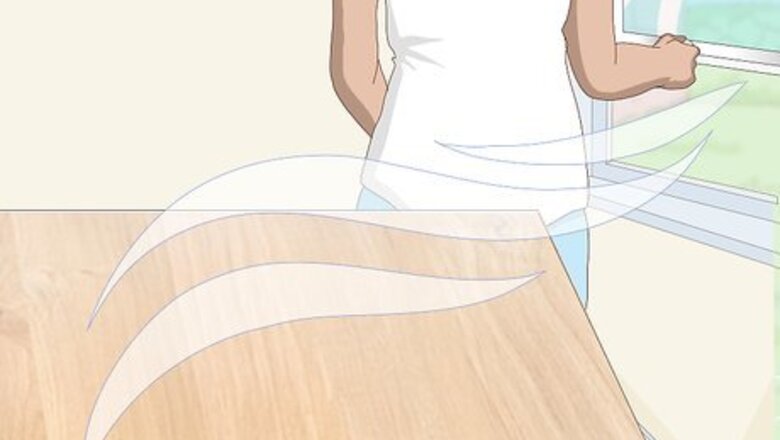
views
Using Dry Ice
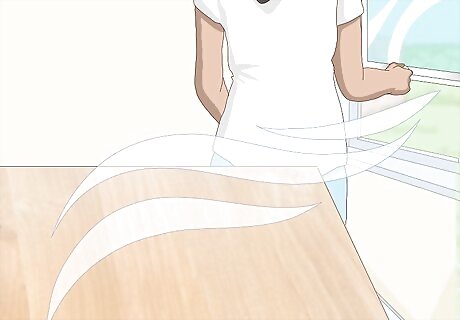
Make sure that the room has adequate ventilation. Open all of the windows and doors in the room. You should never use dry ice in a closed room. The buildup of carbon dioxide that results from dry ice can be dangerous, so it's important that the room you're in is well ventilated.
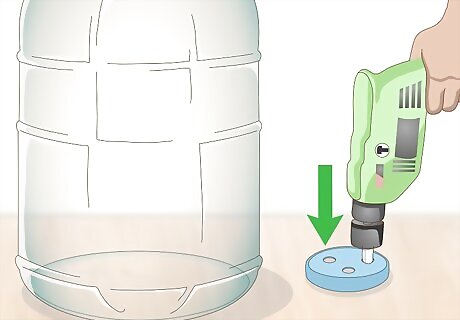
Drill 2-3 holes in the cap of a 3.8 L (1.0 US gal) plastic bottle. This creates a vent for some of the CO2 to escape so that the pressure in the plastic bottle does not build up. You will also need another cap that fits the plastic bottle securely. Do not drill holes into the second cap. Alternatively, you can use a push on/off beverage container lid if you have one.
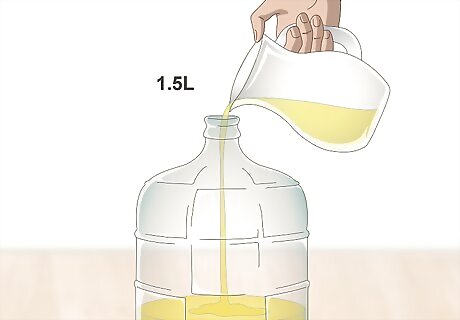
Place 1.5 L (0.40 US gal) of the beverage into the plastic bottle. Make sure that there is plenty of space left in the bottle. Don’t replace the cap yet. You can carbonate a variety of different beverages including water, juice, tonic, and homemade soda.
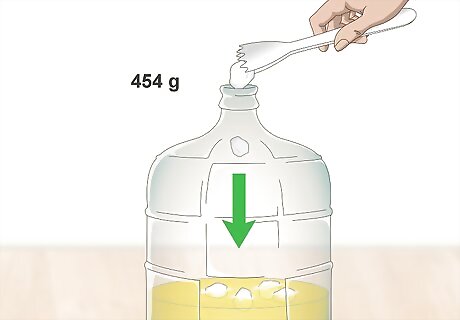
Add 454 g (1.001 lb) of dry ice to the plastic bottle. Use kitchen tongs to transfer the dry ice into the beverage. Wear oven mitts if you are going to be touching the dry ice so that it doesn’t damage your skin. If the dry ice is in large chunks and cannot fit into the bottle, use a meat hammer to break it into smaller pieces first.
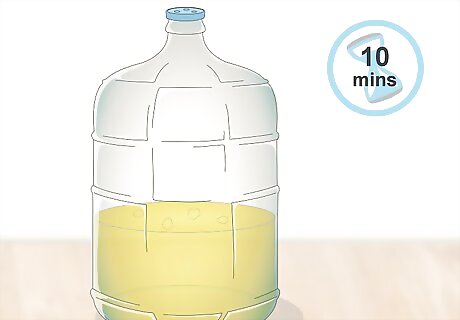
Let the beverage sit for 10 minutes until all of the dry ice dissolves. Screw the cap with the holes in it onto the plastic bottle. This is so that the pressure can escape while the beverage is carbonating. If the dry ice starts to stick to the plastic bottle, gently mix the beverage to help free the dry ice.
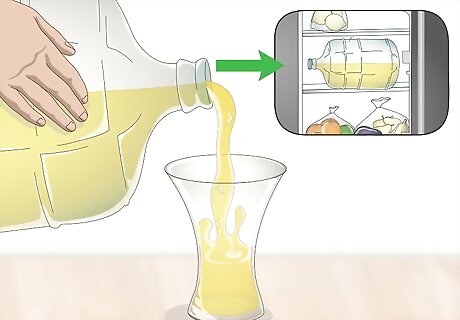
Serve the carbonated beverage or store it in the refrigerator. Once all of the dry ice has dissolved, you can serve the beverage immediately as it will be both fizzy and cold. Alternatively, place a closed cap on the plastic bottle and store it overnight in the refrigerator. It is essential to make sure that all of the dry ice has dissolved before the beverage is served. This is because the dry ice can cause severe burns due to its low temperature.
Using Yeast
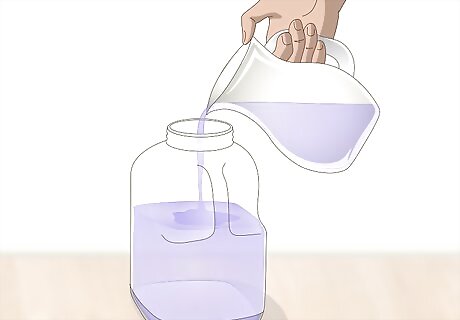
Pour the beverage into a 1 L (34 fl oz) plastic bottle. Leave approximately 5 cm (2.0 in) of space at the top of the bottle. Make sure that the bottle has a cap that can tightly screw on. You can use any beverage that you like. For example, you could mix flavored syrup with tap water at a ratio of 1:2 or you could carbonate fruit juice. Just ensure that you carbonate the beverage in the recommended amounts, as smaller volumes of liquid could develop a bad taste due to the yeast not being diluted enough. The bottle needs to be plastic because this is less dangerous than glass if the beverage accidentally over-carbonates and causes the bottle to shatter. Also, with a plastic bottle, you will be able to easily tell when the beverage has been carbonated. You can transfer the carbonated beverage to a glass bottle for serving if you prefer.
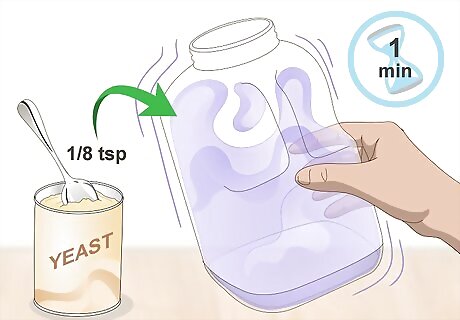
Add 1/8 tsp (0.35 g) of yeast to the bottle and shake it for 1 minute. You should use active dry yeast. Screw the cap on tightly and then shake the bottle vigorously until the yeast dissolves. You can add a label with the name of the beverage and the date to the plastic bottle if you prefer.
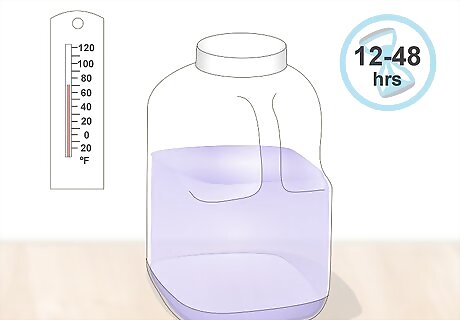
Leave the beverage to ferment for 12-48 hours at room temperature. Keep the bottle in a cool, dark place and out of direct sunlight. Gently squeeze the bottle from time to time to check when it feels very solid and has little give. This means that the beverage has been carbonated. This time is just an estimate, as the actual time that it takes for the beverage to carbonate depends on the temperature in your home.
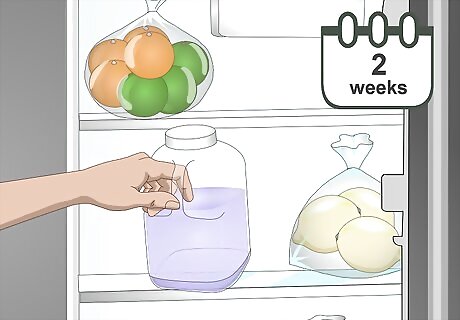
Refrigerate the beverage for up to 2 weeks. When the beverage has reached the right amount of carbonation, store it in the refrigerator until it is served. The cooler temperature in the refrigerator will prevent it from carbonating further. When you open the bottle to serve the beverage, open it very slowly to gradually release the pressure. It may be helpful to do this over a sink.
DIY Carbonation System
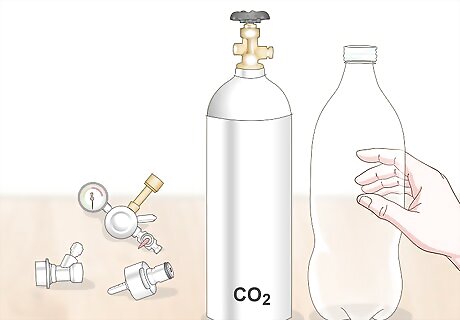
Gather a CO2 tank, regulator, keg coupler, carbonation cap, and a plastic bottle. Prepare all of the necessary equipment before you begin. The keg coupler needs to be a gas-in ball lock type and the carbonation cap can be either plastic or stainless steel depending on what you prefer. Carbonation caps fit standard 1 or 2 L (34 or 68 fl oz) plastic bottles. You can purchase the supplies to make your own carbonation system from a brewing supply store or online. CO2 tanks can be filled at sporting or welding supply stores. Always use a plastic bottle when you are carbonating your own beverage rather than glass. This is because there is always the potential for the bottle to shatter if too much pressure is supplied and plastic is a much safer material in this scenario.
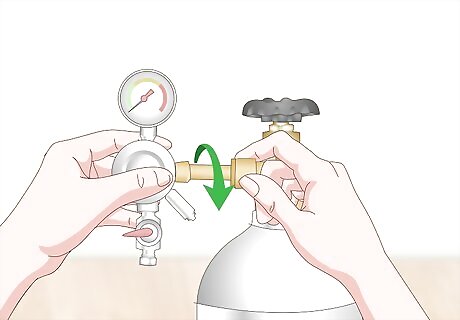
Connect the CO2 tank to the CO2 pressure regulator. Use your hands to screw the CO2 pressure regulator onto the CO2 tank valve. Once you have tightened it as much as you can, use a wrench to tighten it further. The pressure regulator controls the pressure of CO2 that is transferred from the tank and into the plastic bottle.
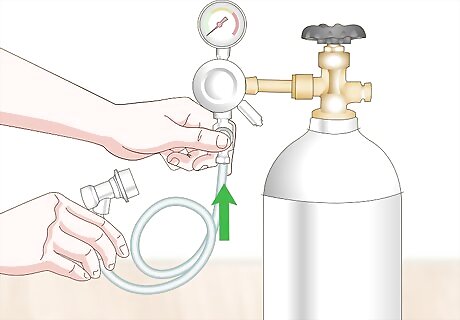
Attach the gas-in ball lock keg coupler to the CO2 pressure regulator. This is how the CO2 gas will travel at a reduced pressure into the plastic bottle. Screw the keg coupler onto the CO2 pressure regulator valve, which is found just below the reading meter. Refer to the instruction manual that came with your CO2 tank and pressure regulator if you have any issues setting up the system.
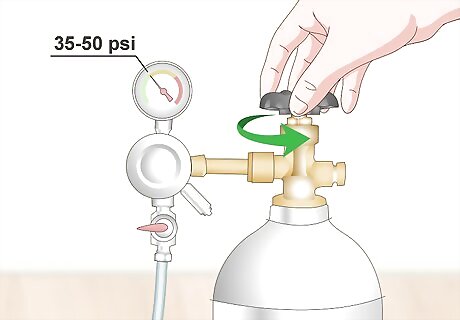
Open the CO2 tank valve and adjust the pressure to 35-50 psi. Turn the CO2 tank valve anticlockwise to open it. Use the dial on the CO2 regulator to change the pressure. 35-50 psi is a good place to start for any carbonated beverage, as it depends on what kind of beverage you are working with and how fizzy you want it to be. Make sure that the CO2 regulator valve remains closed while you are opening the CO2 tank valve and changing the pressure. Drinks that are made with mostly fruit are generally carbonated best at around 35 psi. Mixer drinks such as tonics require higher pressure, so try 40-45 psi for these. Use 50 psi for wine and cocktails, as alcoholic beverages require higher pressures to be carbonated properly.
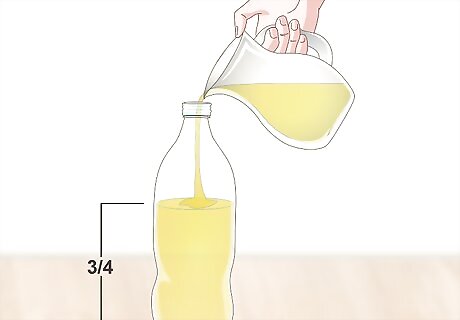
Fill up a plastic bottle 3/4 of the way with the cold beverage. You can carbonate any volume of beverage using a carbonation system. Make sure that you leave some space at the top of the bottle, as the beverage will expand when you add the CO2. It’s important that the beverage is cold as CO2 dissolves more easily in cold liquid. Store the beverage in the refrigerator for at least 2 hours prior to carbonating it. For example, if you wanted to use a 1 L (34 fl oz) plastic bottle, the maximum volume of the beverage that you carbonate will be 750 ml (25 fl oz).
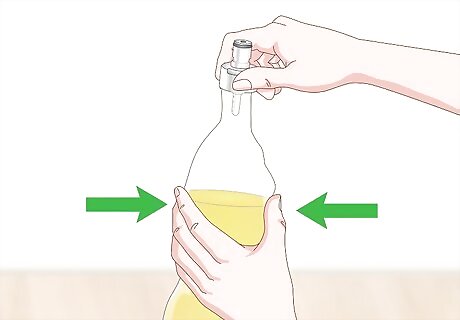
Squeeze the bottle and insert the carbonation cap. Gently squeeze the bottle to force the beverage to rise to the very top. Then screw the carbonation cap onto the opening of the bottle. The bottle will remain slightly scrunched once you attach the carbonation cap. Squeezing the bottle removes the excess air, which creates room for the CO2. When you carbonate the beverage, the bottle will instantly inflate again.
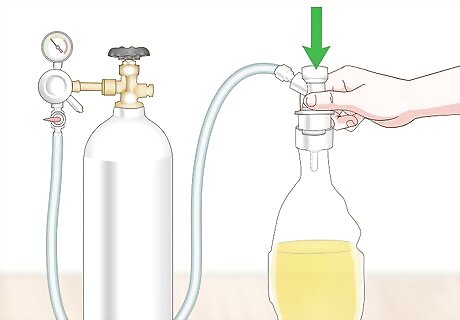
Attach the keg coupler to the carbonation cap. The gas-in ball lock keg coupler attaches the gas line to the carbonation cap, which means that CO2 will be able to enter the bottle. Simply push the keg coupler onto the top of the carbonation cap to attach it.
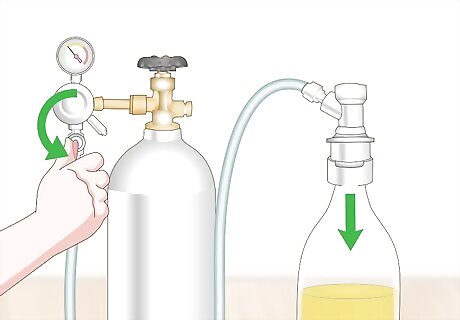
Turn the valve on the CO2 regulator to open it. Twist the valve anticlockwise to open the gas line between the CO2 tank and the bottle. The bottle will instantly inflate to its regular size which indicates that the carbonation process is complete.
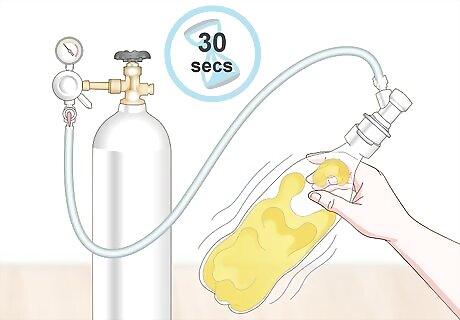
Shake the bottle for 30 seconds. Keep the bottle connected to the keg coupler using the carbonation cap. Vigorously shake the bottle so that the CO2 distributes evenly. Otherwise, all of the CO2 will remain at the top of the bottle. Don’t turn the bottle upside down as you are shaking it. This is because it may cause the liquid to backflow up into the gas line and regulator. Each time you shake the bottle, you will hear the CO2 regulator release slightly more gas. This means that you have correctly carbonated the beverage.
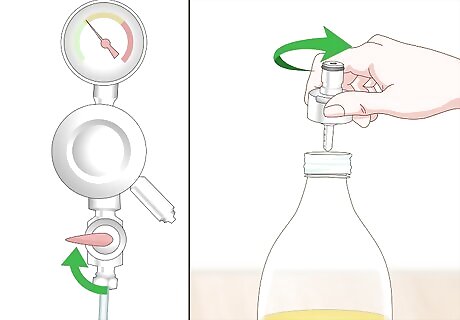
Shut the gas valve and remove the carbonation cap. Turn the gas valve on the CO2 regulator to close the supply of gas. Pull the keg coupler off the carbonation cap. Unscrew the carbonation cap from the bottle.
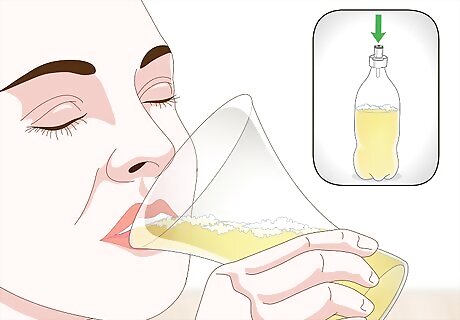
Drink the carbonated beverage or use the carbonation cap to keep it fizzy. Pour the beverage into glasses to serve it straight away. If you want to keep it for later, place the carbonation cap back on to keep the CO2 inside the bottle and store the bottle in the refrigerator. You can carbonate a beverage again that has gone flat using the same process.














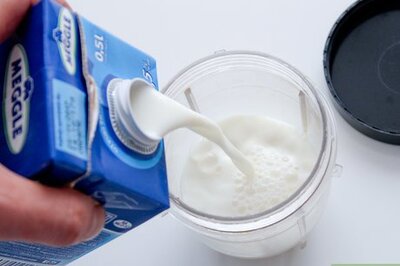




Comments
0 comment